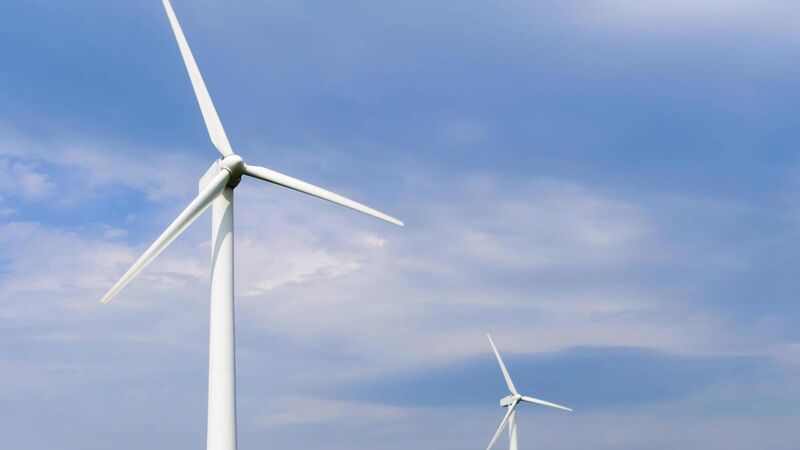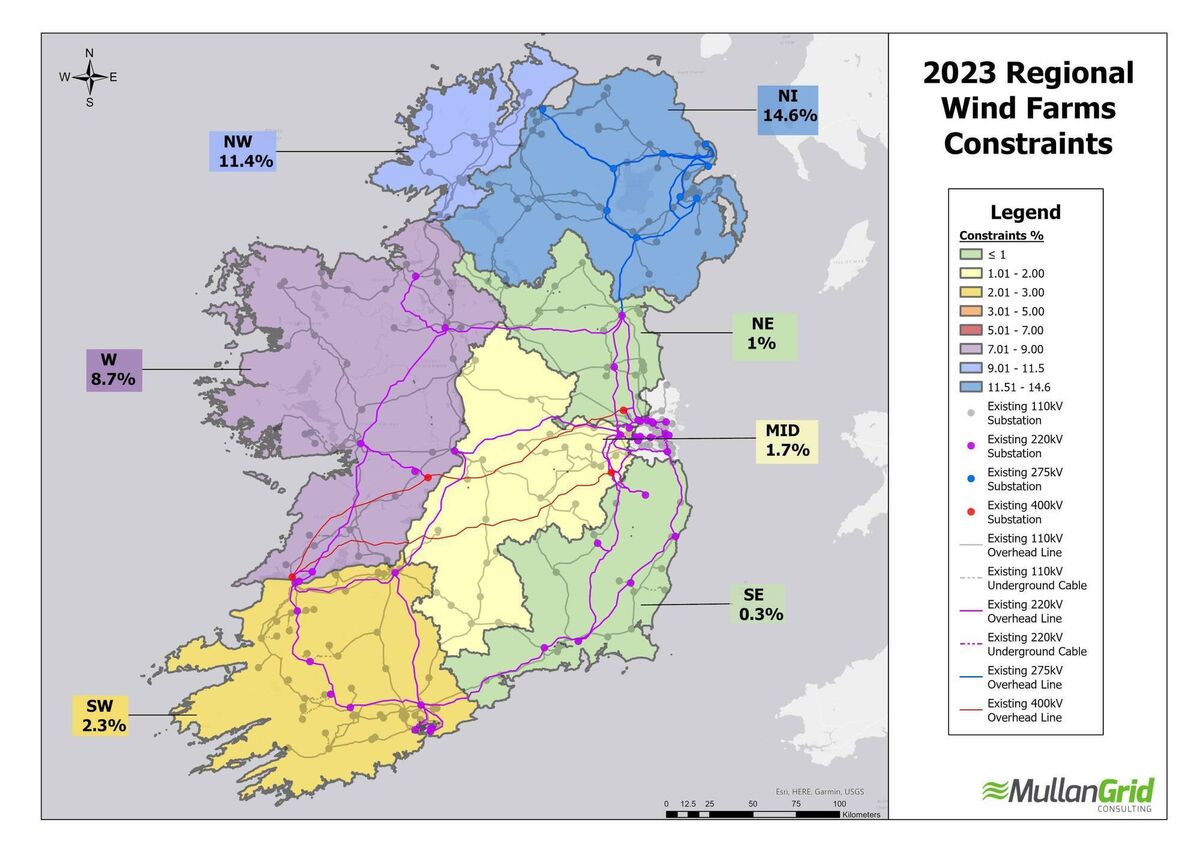Losing wind power means higher electricity bills for consumers, warns renewable expert

Ireland needs to strengthen its electricity grid as wind farms are opting to turn off as they frequently have nowhere to send their energy.
, director of external affairs, Wind Energy Ireland, explains why strengthening the electricity grid is vital to underpin the delivery of wind power

Since the start of the year, 14% of the amount of electricity wind farms could have produced has been lost as more and more Irish wind farms are frequently forced to turn off.
When wind farms are forced to switch off or reduce generation they are typically replaced with gas generation which means higher wholesale electricity prices, higher bills and more carbon emissions.
To fix this problem, we must urgently strengthen our electricity grid to ensure Irish families and businesses can get the clean, affordable and secure power that wind farms provide.
Think of our electricity grid as similar to Ireland’s road network. Some roads are bigger than others and in better condition.
The electricity network is a lot like that. The overhead lines, underground cables, and substations make up the road network along which Ireland’s electricity travels from where it is generated in a wind farm to where it is needed — our homes, farms and communities.
There are wind farms all over Ireland, but the majority are in the west, south-west and north-west of the country where wind conditions are best. This means that on a very windy day a lot of electricity is being generated in these places but what happens if there is so much electricity that there is not enough capacity on the local network to transport it to where it is needed?
The technical term for this is a ‘constraint’ on the transmission system, think of it as similar to a traffic jam on the roads. There is no problem producing the electricity, there is just no way to transport it, and so wind farms must switch off.
Since 2016 constraint levels in the north-west have risen from 2.3% to 11.4%. In the west, it has risen from 0.3% to 8.8% while in the North we are seeing the highest levels of constraints going from 2.3% in 2016 to 14.6% in 2023.
This is all lost energy. This electricity could have been used to cook meals, run milking parlours, charge cars or even just to boil the kettle but instead these wind farms had to stop generating and instead the electricity we needed came from gas.
The more constraints increase, the more carbon emissions we produce and the higher our bills because of the gas generation brought on to replace the constrained wind farms.
The south-west of Ireland, counties — Kerry, Cork, and Limerick – together have 36% of Ireland’s onshore wind capacity and Kerry is the number one county in the country for the generation of electricity from wind.
But constraints there, which peaked at peaked at 7.3% in 2020 have since fallen to 2.3% in 2023.

How is it that the part of the country with the most wind energy has one of the lowest levels of constraints? Simple, we reinforced the electricity grid.
In recent years EirGrid, the transmission system operator, successfully delivered more than a dozen important projects in the south-west which significantly strengthened the local network.
Existing power lines were upgraded, a new power line constructed in west Cork and a major new underground cable in north Kerry. Substations were modernised and new equipment installed. To compare the grid to the road network again, we upgraded country lanes to dual carriageways.
These have made the electricity grid in the south-west of Ireland one of the strongest in the country, ensuring that wind farms built there can produce much more of the clean, affordable, power that Irish consumers want.
But if we want to relieve the congestion in other parts of Ireland we need to upgrade our existing grid and to build new high-capacity power lines and cables like the critically needed North-South Interconnector.
We need to build new grid to accommodate more renewable energy. We need to build a grid that is fit for the 21st century, and that not only addresses today’s constraints, but is futureproofed for Ireland’s clean energy future.








